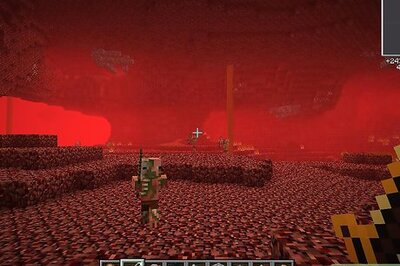
views
window._taboola = window._taboola || [];_taboola.push({mode: 'thumbnails-a', container: 'taboola-below-article-thumbnails', placement: 'Below Article Thumbnails', target_type: 'mix' });Latest News
Contrary to Government bragging, children in tribal districts of the State continue to face the scourge of malnutrition and undernourishment leaving them vulnerable to high levels of mortality.
A latest report on Integrated Child Development Services (ICDS) Scheme in four predominantly-tribal districts shows how grim the picture is despite a multitude of Government programmes. At least 40 per cent of the children, who were covered under the ICDS Scheme during May, were found to be either underweight or severely underweight.
Odisha continues to be one of the states where infant mortality is high and Gajapati, Kandhamal, Rayagada and Sundargarh, for which the reports were collected, record a high number of deaths.
A total of 1,48,474 children were reported to be covered under the ICDS Scheme in the four districts during the month and when they were assessed on the basis of the new growth standard of World Health Organisation (WHO), at least 59,445 were found to be in below-par zone so far as health indicators are concerned. While 51,772 children were underweight, another 7,683 were severely underweight in these districts.
In Rayagada, which has been the epicentre of public health disorder outbreaks in the last half a decade, the figures remained very high at 45 pc. Of the 14,068 children covered under the ICDS Scheme, at least 5,626 were underweight while another 753 were severely underweight.
In Sundargarh district, the numbers were very high. Of the 62,914 children, covered under various nutrition supplement schemes, at least 21,559 were underweight and another 2,898 severely below normal birth weight. Their share was a whopping 38 pc.
In Kandhamal too, similar problems were recorded. Of the 23,483 children, who were covered under ICDS Scheme in May, 41 pc were recorded to be well below their normal birth weight. For Gajapati, another backward region, the figure stood at 39 pc.
During the one month period, at least 1,865 live births were reported by the ICDS system out of which 61 died. Fifty-one of them were in the age group of zero to one year while the rest were between one and five years.
The latest Annual Health Survey by the Census of India also supported the scenario prevailing in these tribal districts by way of the high IMR. In Gajapati, the rate was recorded at 65 per 1,000 live births while in Kandhamal, it was an alarming 88. In Rayagada it was 65 and Sundargarh 55.
In these four districts, a substantial chunk of children suffers from diarrhoea and respiratory illness, which are manifestations of low birth weight, and end in high mortality. For example, in Gajapati, 16 pc children suffers from diarrhoea while 18 pc is victims of respiratory illness, according to the AHS. The trend remained same for Kandhamal, Rayagada and Sundargarh.

















Comments
0 comment